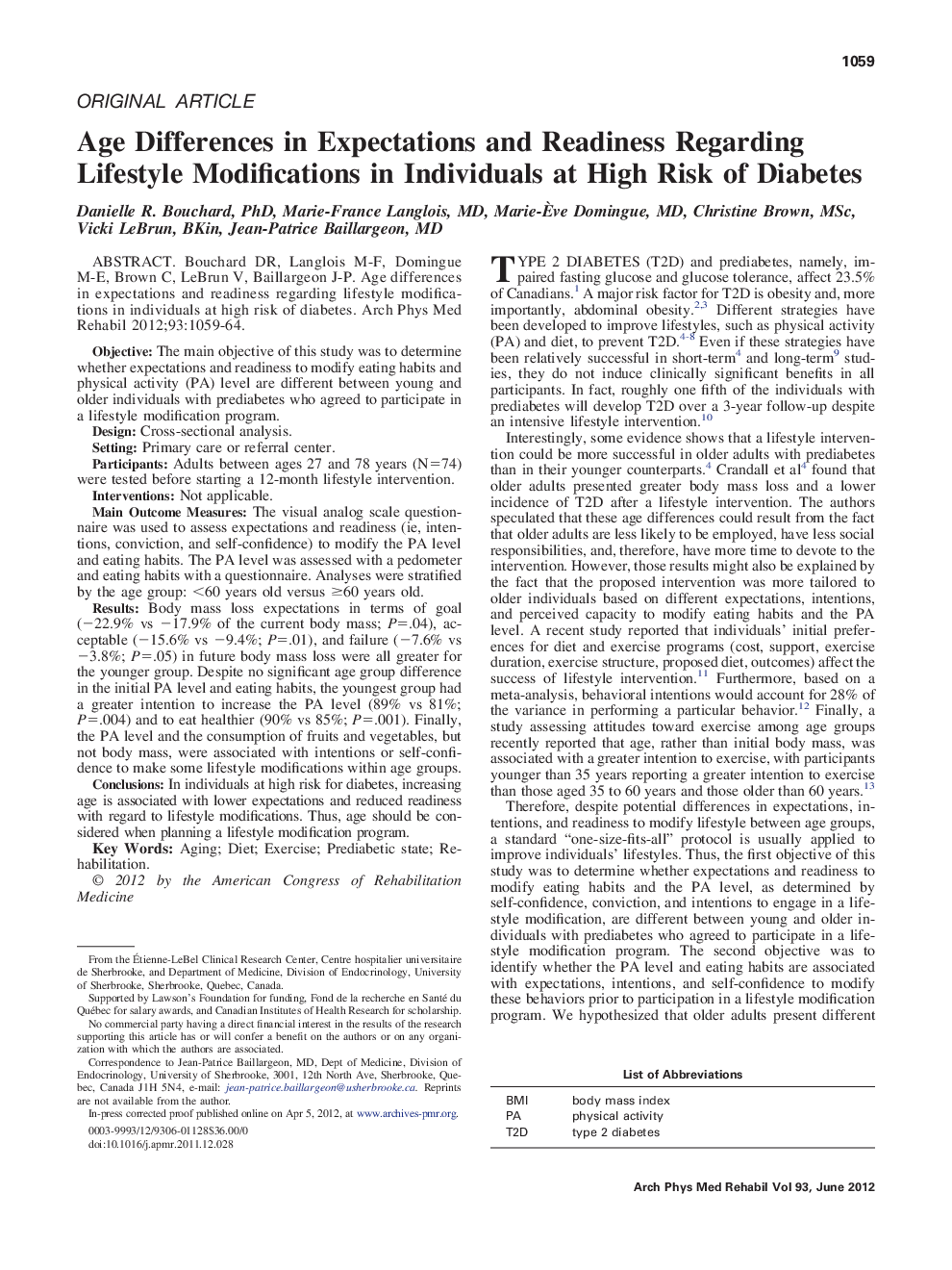| کد مقاله | کد نشریه | سال انتشار | مقاله انگلیسی | نسخه تمام متن |
|---|---|---|---|---|
| 3450001 | 1595725 | 2012 | 6 صفحه PDF | دانلود رایگان |

Bouchard DR, Langlois M-F, Domingue M-E, Brown C, LeBrun V, Baillargeon J-P. Age differences in expectations and readiness regarding lifestyle modifications in individuals at high risk of diabetes.ObjectiveThe main objective of this study was to determine whether expectations and readiness to modify eating habits and physical activity (PA) level are different between young and older individuals with prediabetes who agreed to participate in a lifestyle modification program.DesignCross-sectional analysis.SettingPrimary care or referral center.ParticipantsAdults between ages 27 and 78 years (N=74) were tested before starting a 12-month lifestyle intervention.InterventionsNot applicable.Main Outcome MeasuresThe visual analog scale questionnaire was used to assess expectations and readiness (ie, intentions, conviction, and self-confidence) to modify the PA level and eating habits. The PA level was assessed with a pedometer and eating habits with a questionnaire. Analyses were stratified by the age group: <60 years old versus ≥60 years old.ResultsBody mass loss expectations in terms of goal (−22.9% vs −17.9% of the current body mass; P=.04), acceptable (−15.6% vs −9.4%; P=.01), and failure (−7.6% vs −3.8%; P=.05) in future body mass loss were all greater for the younger group. Despite no significant age group difference in the initial PA level and eating habits, the youngest group had a greater intention to increase the PA level (89% vs 81%; P=.004) and to eat healthier (90% vs 85%; P=.001). Finally, the PA level and the consumption of fruits and vegetables, but not body mass, were associated with intentions or self-confidence to make some lifestyle modifications within age groups.ConclusionsIn individuals at high risk for diabetes, increasing age is associated with lower expectations and reduced readiness with regard to lifestyle modifications. Thus, age should be considered when planning a lifestyle modification program.
Journal: Archives of Physical Medicine and Rehabilitation - Volume 93, Issue 6, June 2012, Pages 1059–1064